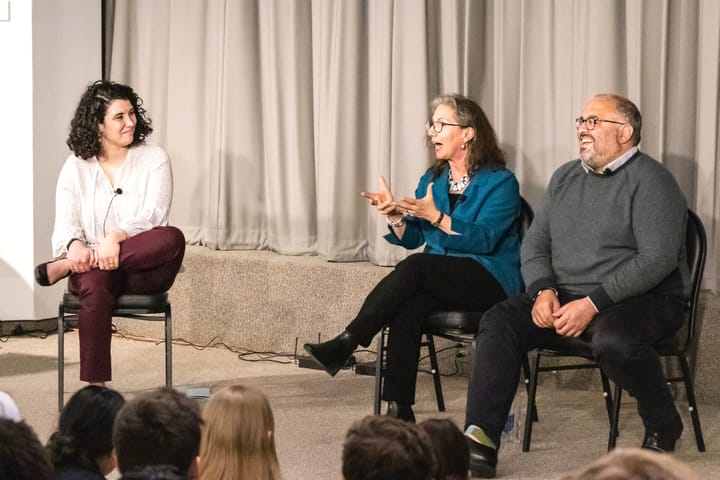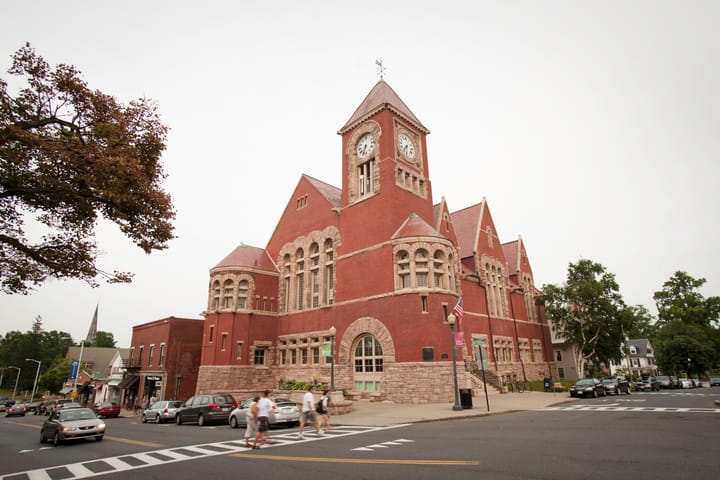Plan for the Future
As we all look forward to a semester of in-person teaching and learning this fall, the college is facing a challenge in providing housing for all returning students. On May 6, the Office of Student Affairs announced in an email to the student body that they expected more students to come back to campus this fall than a typical semester because most students who elected a leave of absence over the past year have indicated that they intend to return to campus. This means that the college must make adjustments and changes to their housing stock accordingly to accommodate everyone who is returning.
Specifically, the college anticipates that it will have to house 170 more students this fall compared to past fall semesters. To address this, the administration plans to convert some singles to doubles, doubles to triples and potentially some lounges into bedrooms. In response to these preliminary changes, students have expressed concerns regarding overenrollment and the uncertainty that the college can provide reasonable housing conditions in the coming year.
This week, the Editorial Board reflects on some of the solutions that the administration has laid out and considers other alternatives in dealing with this difficult situation. We see this housing crisis as an opportunity for the college to invest in long-term infrastructure improvements to better serve the college’s growing student population.
Over the past several decades, the size of the student population at Amherst has grown slowly but steadily –– from 960 students in 1966 to 1,570 students in 1990 to 1,849 in 2021. As the college has grown, so too have its housing problems. Several times, the college has been forced to rely on its ability to “triple” rooms intended to be two-room doubles. Most recently, this was an issue with the Class of 2022, 60 of whom lived in forced triples during their first year at the college. And even when the college has avoided increasing the number of triples, students have faced housing difficulties, such as the inability to switch roommates or rooms, as a result of the number of spaces the college has available. While this isn’t the end of the world, it’s still an issue we believe an institution with the resources and goals of the college can and should fix.
The first instinct one may have when considering ways to house an oversized student body is to expand off-campus housing. We have seen what this might look like firsthand, as many students have taken to living in the town and surrounding area while on-campus housing was limited during the pandemic. The college is currently conducting the off-campus housing portion of the housing selection process, allowing up to 50 students to opt out of on-campus accommodations. The cap on the number of off-campus students has normally been justified because it helps build a tighter community, but as the college lacks adequate housing for its incoming student body, especially in the aftermath of a public health crisis, some of these restrictions may seem outdated.
However, we believe that the cap should remain in place. It serves its purpose well, giving students both shared experiences and close locations, facilitating a communal environment in which students know not only their classmates but also their dormmates. Furthermore, the town itself is in the midst of its own housing crisis — largely spurred by college students living in town — that Amherst should avoid contributing to. Sometimes being a good neighbor means taking care of issues in-house rather than outsourcing our problems to the broader community.
If Amherst chooses this approach, it ultimately means finding a way to house all of its students on campus. The current plan, while feasible, is certainly not ideal and fails to address the steadily growing nature of college’s housing difficulties. It would have students forced into smaller and smaller spaces with little privacy or comfort, and if the college solved the enrollment problem the way it did for the Class of 2022 in their freshman year, students would only receive some AC dollars in recognition of the reduced value of their living conditions — the Amherst version of in-store credit.
For such a plan to have a chance at working, the college would need to take preparation and renovation seriously. Simply adding curtains, bunkbeds or room dividers won’t do much to solve privacy concerns. Instead, this dorm overhaul would require investment in structurally stronger and, in some cases, perhaps more permanent renovations and changes in order to provide students with a safe and comfortable living environment.
For that reason, the Editorial Board prefers a longer-term approach to the issue, one which targets both the direct results of enrollment changes, like housing, and the indirect changes, like dining and class sizes. We believe that, should the college continue to experience intermittent student housing crises, the only logical solution can be the construction of more dorm buildings to accommodate the student body’s needs. For the time being, the construction and provision of temporary housing for excess students might prove a healthier and safer alternative to forced doubles, triples and lounge bedrooms. The college community is at its strongest when we are all together on campus and more housing may prove to be the only way to make that happen.
In addition to housing issues, a greater number of students on campus means changes to student life itself. Valentine Dining Hall, our campus’ only dining option included in room and board, has faced greater wait times, with some students reporting half-hour-long lines just to get a warm meal. And while we all miss sitting and enjoying our time with friends in Val before the pandemic, the pre-pandemic “Val sit” may not be able to make a comeback as a larger student body makes Val’s already tight seating availability nearly impossible to find. Maintaining outdoor dining options may go part of the way toward solving the latter issue, but the more significant wait-time issue requires something more extreme. The college could continue investing in financial aid for delivery services in order to ease the demand for Val dining, but it may ultimately make more sense to simply build another dining hall. Williams College, one of our closest peer institutions in terms of size as well as our lifelong rival, has only 138 more students than Amherst but three times the number of dining halls. While we’re not convinced that our college needs to match that number, the need for at least a second dining hall becomes clearer with each year.
Class size is another concern that students have raised in regards to increasing enrollment and a greater number of students on campus. This concern, however, seems as though it has impacted some types of courses, such as small-group discussion courses, greater than others. A look at the college’s Common Data Sets indicates that the student-faculty ratio has decreased even as enrollment numbers have risen, as 71.1 percent of the college’s classes are under 20, just four percent lower than Williams. Though student concerns may exaggerate the danger of Amherst losing its small college feel, they do highlight that an expansion of the student body should be met with an equal or greater expansion in the faculty in order to upkeep the quality of education that the Amherst community prides itself on. We trust that the administration will ensure that this trend continues — perhaps by matching the 6:1 student-faculty ratio released by Williams in their latest Common Data Set.
The pandemic has certainly changed the college’s housing situation, and we are sympathetic to the difficulties faced by the administration in coping with an increased number of students on campus. No solution will be perfect, and any proposal is sure to receive its share of criticism. We hope that the administration will take student’s concerns seriously and endeavor to deliver an on-campus experience next year that is both comfortable and safe.
Even so, it’s important to acknowledge that the college’s infrastructure woes are not the product of a moment in time, but rather of trends that have unfolded over decades. Each time the college expands, it becomes ever-so-slightly less functional, less convenient and less capable of providing the college experience we all know that Amherst can provide. It is for this reason that we call on the college to make long-term plans in order to address the needs of a growing student body — whether that be through more housing, more professors, or even another dining hall.
Unsigned editorials represent the Editorial Board (assenting: 10; dissenting: 0; abstaining: 1).




Comments ()